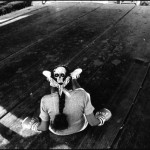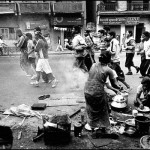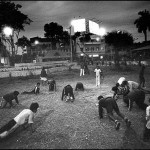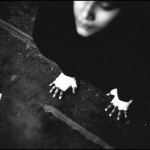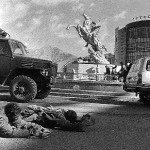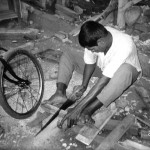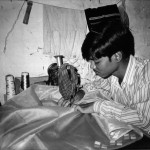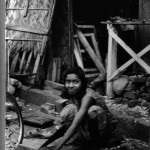The Boxing Ladies – David Trattles
The girl boxers always trained at dusk. They’d come trickling in from slum-crowded Eckbalpore and Khidderpore. To transit, they had a few rupees and a few options.
To start with, the girls face the same kinds of challenges that women would have to face as boxers in any community, in any country. Friends, families ask: ‘Are you trying to be a man? Because men box.’ And, ‘Your face will get messed up, you will never be able to get married.’ Perhaps, with a change of clothes: ‘Are you trying to change your values?’
India is such a man’s country. Accordingly, the cards are heavily stacked in his favour. And these girls are Muslim, which carries its own weight as to the position of women in society. And the Muslim population is a mere eight per cent slice of India. Given this environment, it’s tough to be an independent woman. Yet here you have these girls reaching out.
(from the catalogue David Trattles The Boxing Ladies)
Breaking away from the shackles of a conservative society ruled by male hegemony, a number of young girls in the Calcutta try to live out their dream of being secure and independent in a unique fashion. They train themselves to be amateur boxers, not merely to fight in the ring, but to obtain a job at the end of it all. Boxing Ladies showcases 70 black-and-white photographs of these girls by David Trattles
Borders and Beyond
A border is the interface between national sovereignty and personal freedom of movement. A border is also the dividing line between legality and illegality. People from poor countries are driven to emigrate in anticipation of a better life. Not many succeed in entering the promised land. Many are deceived along the way, most of them get caught long before reaching the destination of their hopes.
People and their destinies –photo stories. 11 renowned international photographers take us around the globe to places where opposites collide: surfeit and misery, belonging and exclusion, inside and outside. This exhibition is a call to overcome.
Produced by the Swiss Arts Council Pro Helvetica and the Swiss Agency for Development and Cooperation.
Contact
Black and white photography by children, looking at child labour – an outcome of a weeklong workshop for children between 11-17 years, aimed at creating awareness of children in hazardous occupations, and using photography as a means of focusing on this issue. During this week, workshop participants were taken through the basic principles of black and white photography, and shown films on the subject. They were then taken to meet and interact with children engaged in labour with the help of various NGO”s, given the opportunity to shoot on location, and encouraged to keep diaries documenting their experiences.
The workshop ended with an exhibition constituting photographs, testimonies and diary entries of the participants.

